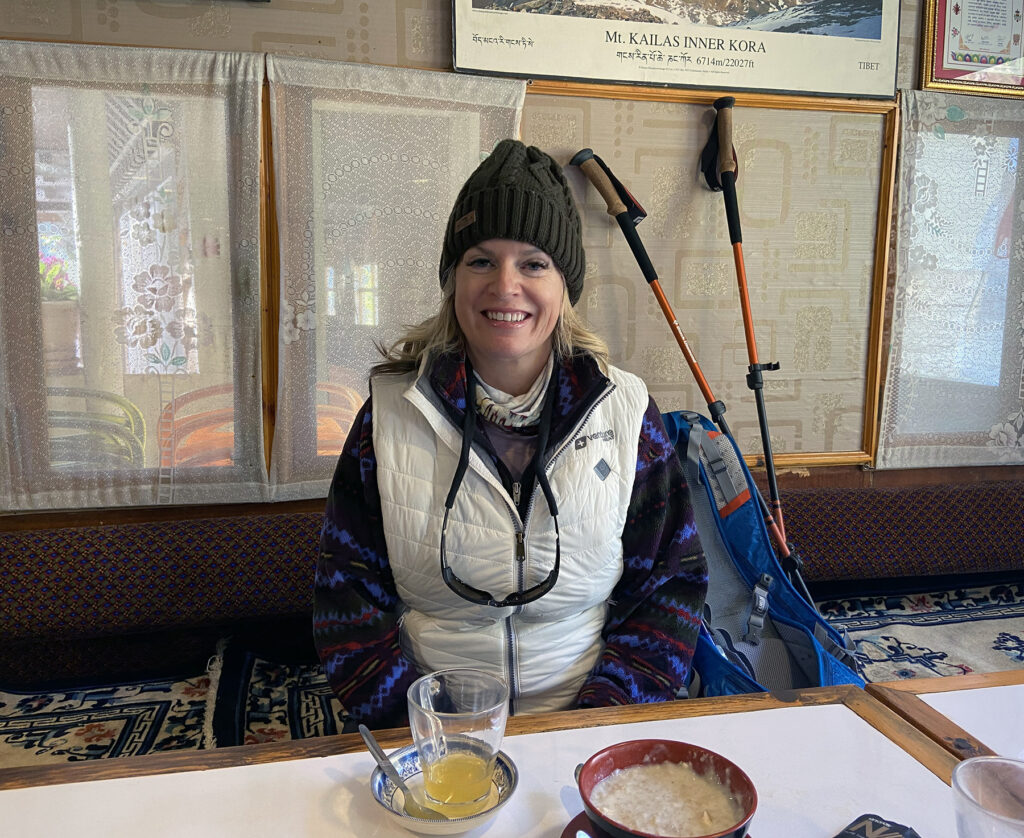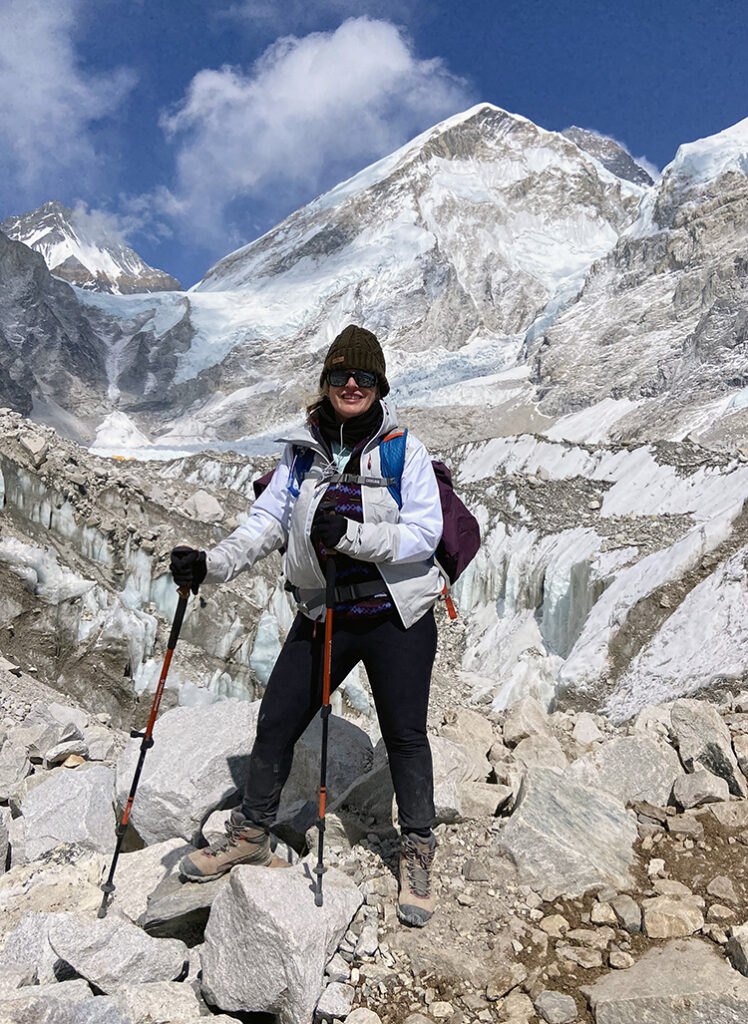The Basic Information
- Distance: 75 miles round trip
- Starting Elevation: Lukla (elevation 9,383 feet)
- Maximum Elevation: Kala Patthar (18,514 feet)
- Base Camp Elevation: 17,598 feet (5,364 meters)
- Time Required for Trek: 11-12 days (ours was 12 days, with 9 going up and 3 coming down)
- Acclimatization Days: 3-4 (4 for us).
- Average high temps: 40-50 degrees Fahrenheit.
- Average low temps: 0-20 degrees Fahrenheit
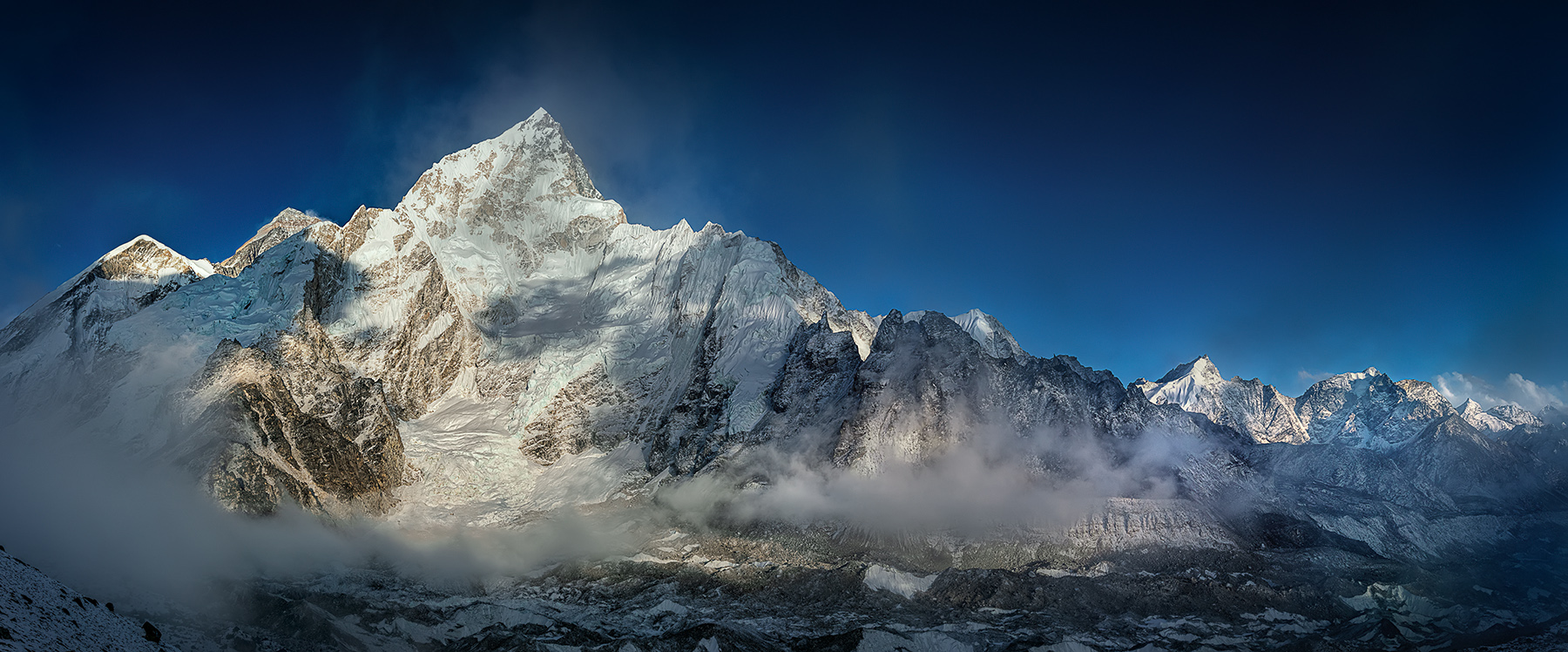
Trekking to Base Camp
Trekking is apparently a big thing in other countries. That came as something of a surprise to me, being from the U.S. where most people’s idea of a great vacation involves laying on a beach with a cooler of beer. In other parts of the world, however, lots of people devote days and weeks to getting to remote and exotic places on foot. And there are many exotic destinations to choose from. The “Big Three” in my estimation are the Inca Trail in Peru, Mount Kilimanjaro in Tanzania, and Everest Base Camp in Nepal. Recently, my wife and I tackled the last of these: the trek to Everest Base Camp.
Why did we do that? It started with my wife’s fascination with Mt. Everest. She’s read everything about it, and names like Mallory, Norgay, and Hillary are used so much in our house you’d think they were cousins. She wanted to go see the mountain, and we started looking up how to go about it. After a while I got on board, mostly because of the opportunities for photography in the Himalayas. There are no cars or roads in that part of Nepal, so trekking was the only option. We hired a trekking service (Ian Taylor Trekking, more about them in a bit) and began training.

Since then, we’ve discovered that lots of people seem really interested in what it takes to trek to Everest Base Camp. It is obviously a long hike, and you do most of it at altitude, so you have to work through that. In addition, it is all done in a place where it can be very cold, where there is little to no power, and you cannot eat the meat or drink the water. All this means pretty significant logistical challenges. Can you do it? I suspect you can. I thought I’d walk you through our trip so you can see what it takes.
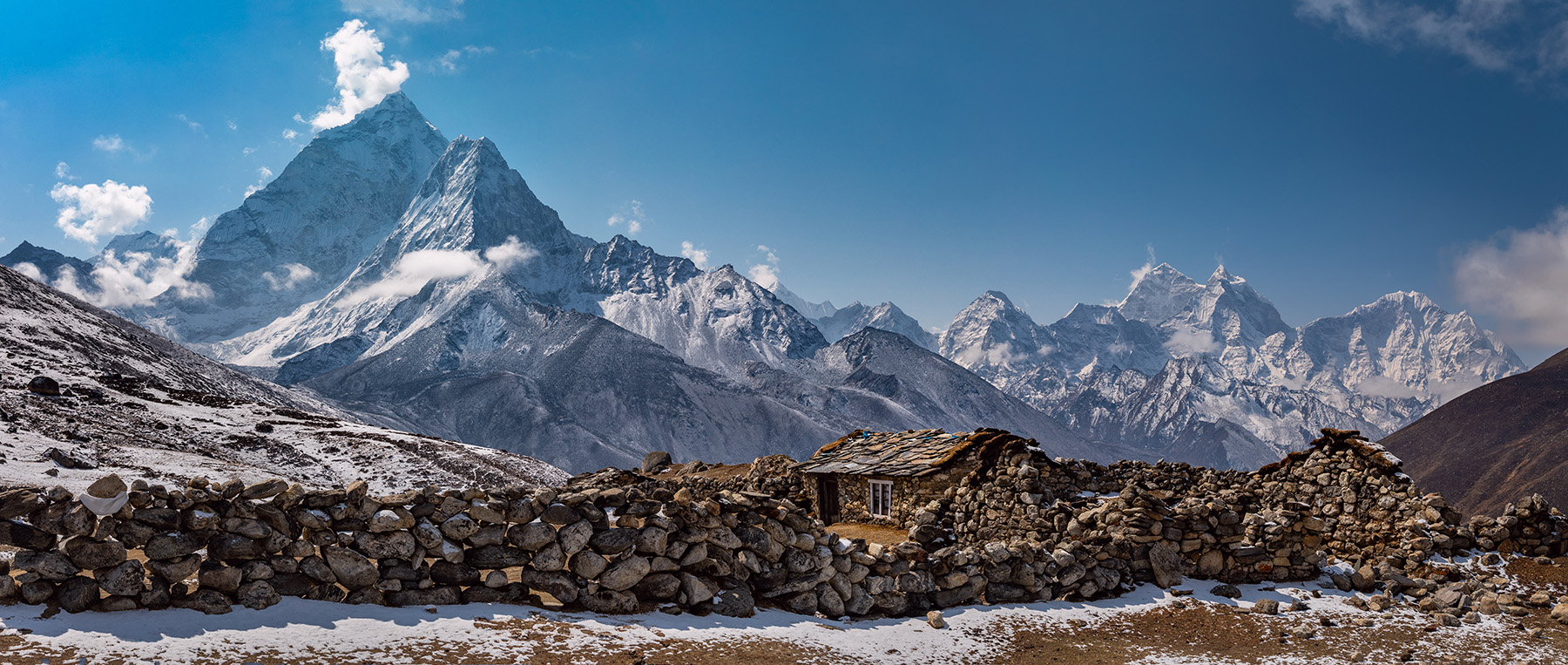
Hiking in Nepal
The first question we get is how much hiking is involved? The short answer is that you will be hiking anywhere from 4 – 8 hours a day.
A typical day would be to eat breakfast and then be on the trail by 7:30 – 8:00 am. We’d hike until about noon (with one break for tea or coffee in midmorning), then eat lunch. In the afternoon, we’d hike about another 3 hours or so, and then be done by about 4:00 pm.
You may picture us trudging uphill all day, but that wasn’t the case. It came as a surprise to us that there were lots of stretches of up and down terrain where you ended up at the same elevation as you started. Our guides jokingly referred to this as “Nepali-flat.” There is no truly flat terrain in the Himalayas, as far as I could tell. A testament to this is that, despite the world-wide popularity of soccer, I saw no soccer fields anywhere. Apparently having that much flat land was just out of the question. (For that reason, volleyball seems to be the most popular sport in that region.)
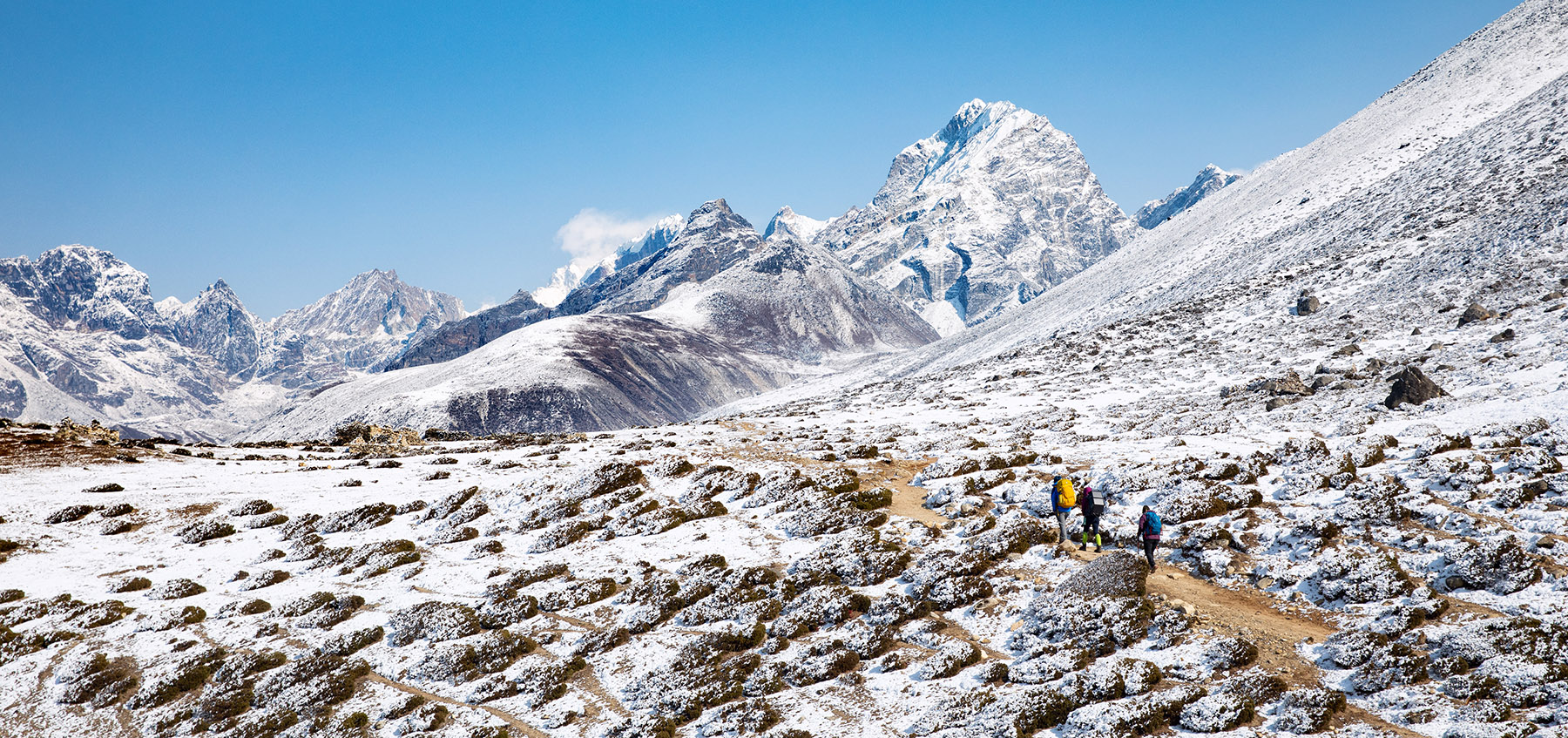
On the way up to Base Camp, oddly, walking downhill was the worst. The reason is that you knew it was taking you further away from your goal. If you started the day at 15,000 feet and you knew you had to end up at 16,500, then every step you took downhill was taking you further away. You knew that sooner or later you’d have to pay the piper. And you did. At some point you’d get to the uphill part of the trail and then you’d just be going uphill for as much as a couple of hours.
If that sounds miserable then let me tell you why it might not be as bad as you think. It all has to do with the method of trekking that was shown to us by Ian Taylor and his wife Laura. You see, my wife and I are not really hikers. Prior to the EBC trek, we had done nothing more than a few day-hikes here and there. Further, we live in Texas, which is quite flat, and what hiking we did involved no hills. We knew we wouldn’t be able to practice hiking in mountains (or even hills) and we were worried about it.
It was because of that worry that we discovered Ian Taylor. We started trying to figure out how to train for this trek, and we ran across some articles Ian had posted to his website about how to train. We read them all and he seemed really knowledgeable and offered a lot of practical advice. On his website, Ian invites you to call him, so I did. He walked me through a lot of the process and was very nice about it. He also said that if we were ever in Vail, Colorado, where he lives, to contact him and he’d meet us for a hike. So we did. He and his wife agreed to walk with us up Vail Mountain.
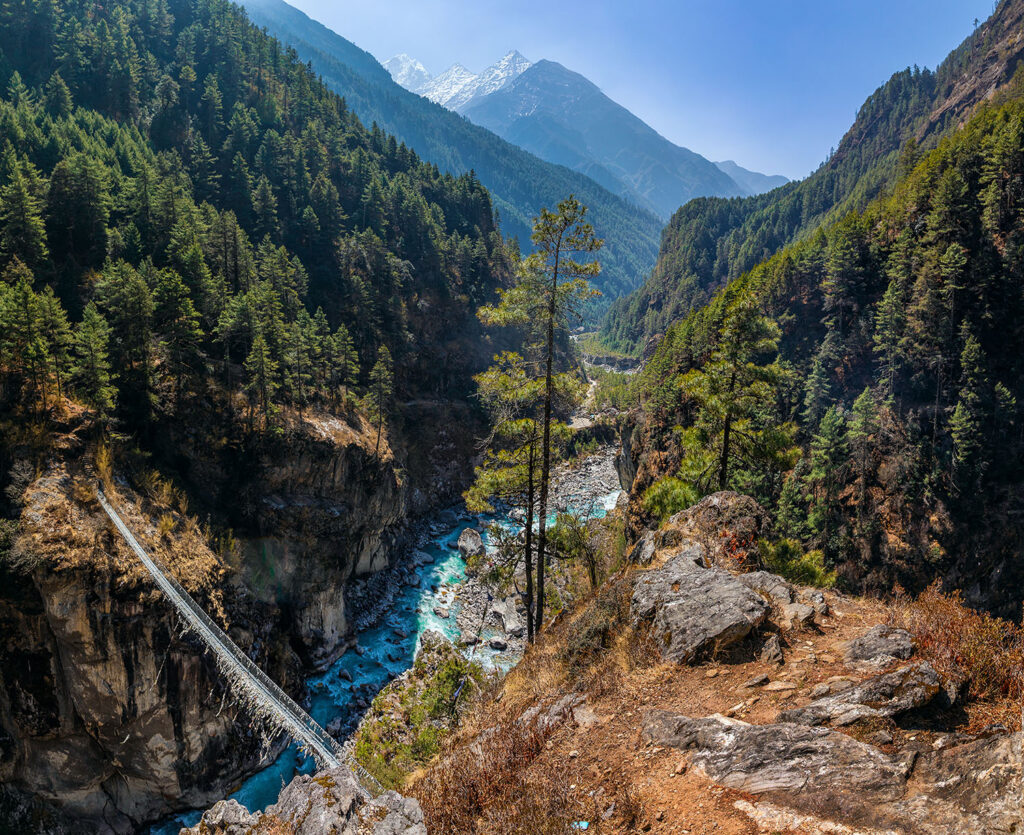
On the agreed day, we met up and started hiking. We hadn’t gone 50 feet when Ian stopped us and told us we were going way too fast.
So we walked slower. At first, we thought they were just giving us permission to be slow, but after a while they explained that you actually should go slow, no matter your level of fitness. In the mountains with the corresponding thin air, if you overexert yourself, your body cannot recover. Therefore, hiking fast is a recipe for failure. It isn’t a matter of being strong or weak. Even the climbers and stronger trekkers hike slowly (although not quite as slow as us).
Once we did this, everything changed. Where we had struggled up a smaller mountain the day before, we climbed the mountain with Ian and Laura fairly easily. From that point we knew we could do this. If we could do it, then I suspect, so can you. That’s not to say you won’t need to train. You will. You’ll need to go on practice hikes. You’ll need to hit the Stairmaster. You’ll need to be in moderately good shape. But only moderately. You don’t need to be an athlete to do this.
After a certain point, you are just training to keep your trip from being miserable. As mentioned, I think a lot of people are capable of doing this trek. But you have to remember you are supposed to be enjoying yourself to a certain extent too. If you are miserable from hiking, you won’t be enjoying the scenery or anything else. So it isn’t a matter of training to be able to complete the trek, but more a matter of training to enjoy it more.
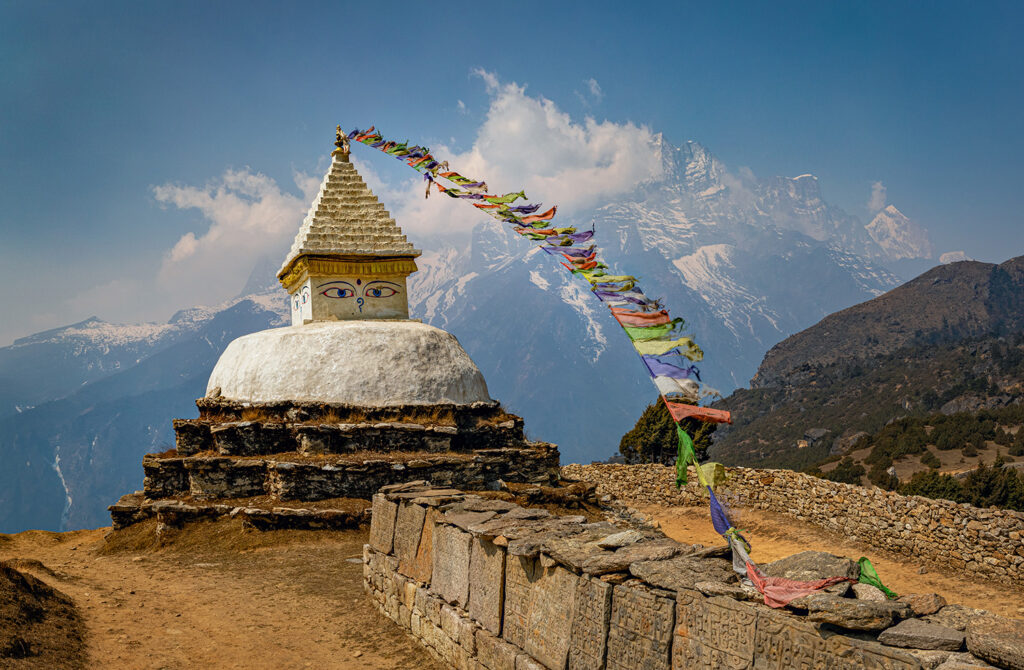
Dealing with High Altitude
The next issue is altitude. As you likely know, the higher the altitude the thinner the air, and the less oxygen your body will get. By the time you get to Base Camp, your body is getting only 50% of the oxygen it would get at sea level. This makes physical exertion difficult and can also lead to a host of symptoms. These symptoms range from mild headaches to death. Ok, that sounds scarier than it really is. For most of us the symptoms tend to be mild, and the vast majority of people can make it to Base Camp.
Also, thankfully, the altitude problem is easily solved. A hundred years ago or so, they figured out that your body could adapt to the high-altitude environment, so there are steps you can take. More recently, they have developed medication to help as well. Before you go to Nepal, go to your doctor and get some altitude medicine called acetazolamide (aka Diamox). You start taking it a few days before your track and it really helps with the altitude.
But that’s not all. There are other steps to take, the most important of which is to drink a lot of water. Our guides were pushing us to drink 5 liters of water a day. This initially seemed a little excessive to me, but every time I skimped on the water I ended up with a headache. Very quickly I was a believer and drank lots of water. If you do that, you should be fine. There is a small percentage of people that have problems even if they do everything right, but I believe the percentage is very small (like around 5%, as Ian Taylor boasts a 95% success rate to Everest Base Camp).
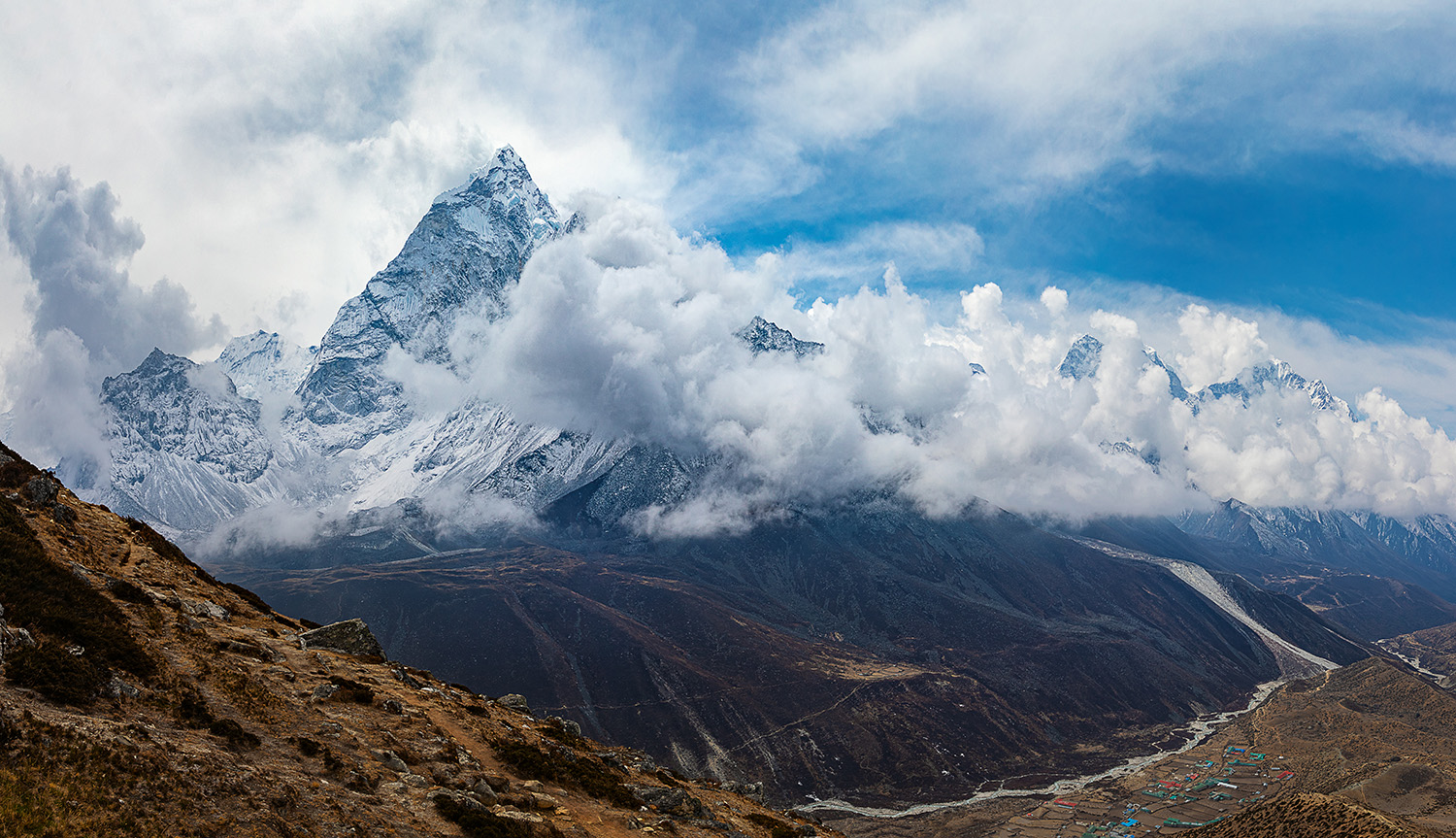
You also have acclimatization days to help with the altitude. These are days where you sleep in the same place, but they aren’t rest days. You still hike 2-4 hours uphill. The saying is “hike high, sleep low” and this helps your body acclimate to what is coming. We spent three nights in Namche Bazaar (the largest town in the region) and two nights in Dingboche (a very small village). Apparently, most treks only spend two nights in Namche and Ian says that is one of the reasons for his high success rate.
Twice a day, our guides measured our oxygen levels and kept track of any altitude symptoms. For most of the trek, Susan and I actually had no symptoms. I had a mild headache a few times, but again I attribute that to not drinking quite enough water. However, once we got to Base Camp, we both had trouble sleeping. In fact, neither of us was able to sleep there. In hindsight, I’m sort of glad about that though, as my most spectacular pictures were taken or the Milky Way at night. I never would have seen it had I not been up all night. Once we started down, the symptoms went away quickly.

Eating, Drinking, Sleeping
We get asked where you stay and what you eat a lot too. You pass through many small towns on the way to Base Camp, and they all have something called teahouses. Think of these more as inns rather than places where you drink tea (although you can drink tea there). And for the first few nights of the trek, they actually are like inns. There is a common area with heat where they serve food. They have basic rooms with their own bathrooms. They don’t have heat, toilet paper, towels, or other amenities, but they were not too far off from what you might be used to. In the beginning we even had power outlets in our rooms and hot water (sometimes)!
As you progress in the trek, however, the teahouses get more and more primitive. That is understandable because there is no way to get things up there except on someone’s back (a person or a yak), although they will sometimes helicopter things in. The structures end up being little more than plywood shacks. You still get your own room, but it will consist only of two twin beds thrown together out of simple lumber. There are no showers and what passes for a bathroom is down the hall. There is no power or hot water. Only the common room is heated, and that is heated via yak dung so it can take on a stench if the heating system isn’t sealed properly.
If that sounds horrible, it is all a matter of perspective. If you compare these teahouses to staying in a western hotel, then yeah, it isn’t going to measure up. But if you compare them to camping, then they are quite nice. They protect you from the elements, and that is a big deal. It definitely beats sleeping in a tent, although we actually did that at Base Camp.
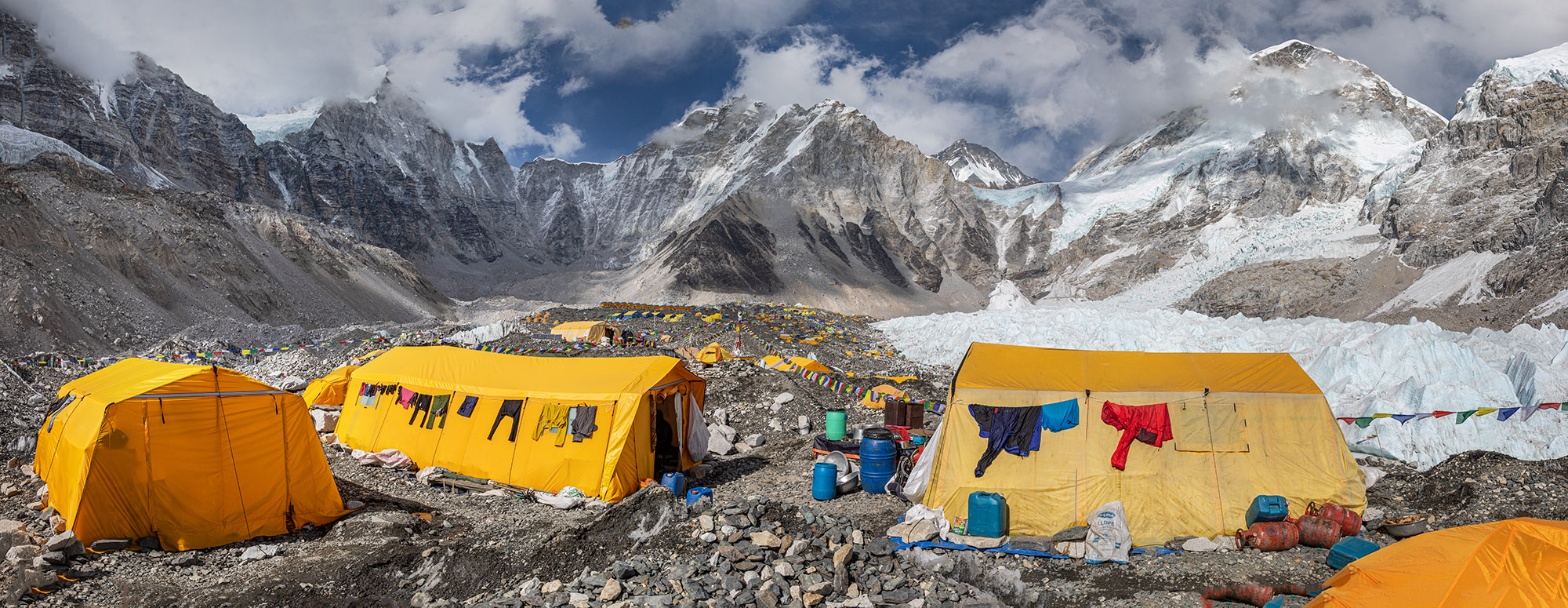
Once you pass Namche, you are told not to eat any meat. There is no refrigeration or means to preserve the meat, so it can be bad. Your diet starts consisting largely of rice and noodles. There is a rice dish in Nepal called Dal Bhat, which is referred to as the national dish of Nepal. I was dubious of that, but after watching our guides eat nothing but Dal Bhat for days on end, I was sold. We used to enjoy asking them what they were eating every day, knowing we would get the same answer at each meal: Dal Bhat. They also have a saying: “Dal Bhat power, 24 hour.”

Water was a perpetual problem from the moment you land in Nepal. You cannot drink the water there without treating it. They do have a lot of bottled water around though, although our guides discouraged us from buying them (presumably for environmental reasons, but I never asked). If you are not familiar with the treatment methods, it has come a long way from the old tablets that made your water taste acidic. Now you can buy all sorts of treatment methods based on UV rays. I used something called a Crazy Cap, which shot UV rays into my water bottle for a minute or so and purified the water. My wife had something I liked even better called a Steri-Pen, which you held in the water for a minute or so and it purified it. The benefit of that is that you can stick it in your Camelback or other pouch to use.
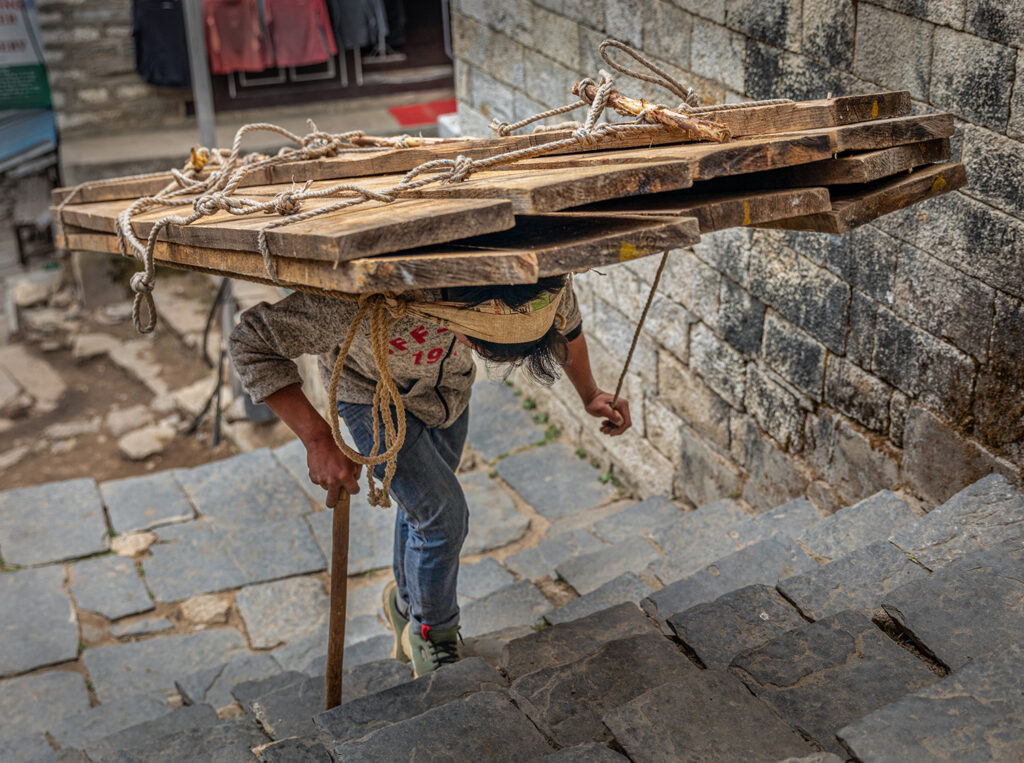
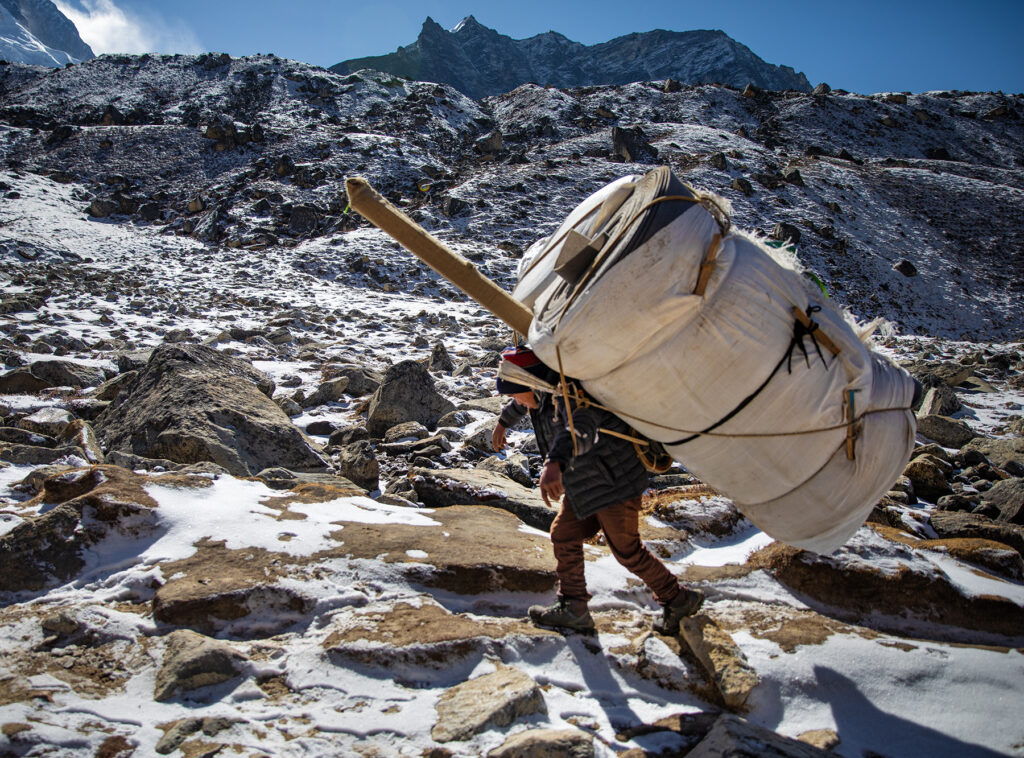
Another problem with water is that it freezes overnight as you get up into the higher altitudes. Again, the rooms have no heat. For the first few days this was no problem. But as you climb higher and higher the temperatures keep dropping. At Base Camp we were in single digits (Fahrenheit). It was cold.
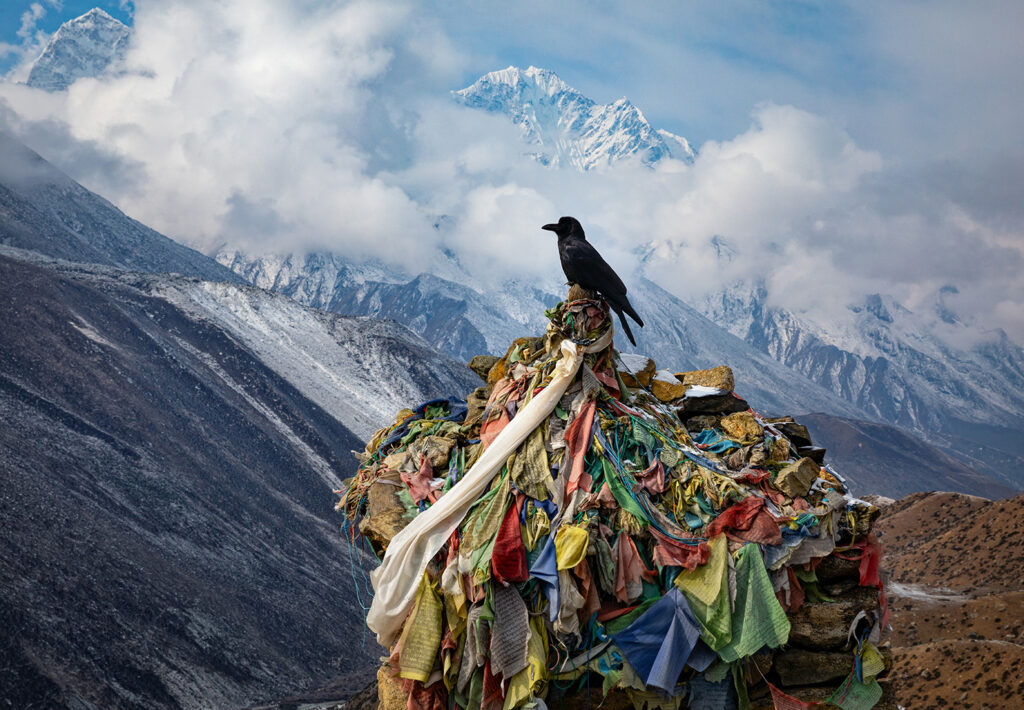
A Few Surprises
And that leads to what was probably the biggest surprise of the trip for us: the cold. It isn’t that we didn’t expect it to be cold, we did. And we prepared accordingly. We had warm clothes, layers, and warm coats, hats, and gloves for when we were hiking. We had warm sleeping bags and liners for nighttime. None of that surprised us.
What surprised us was how you could just never shake the cold. When you get done hiking, it is cold. But then temperatures start dropping fast. Even in the common areas of the teahouses where they had a heater, you still had to wear your coat. Once you left that room, it was below freezing. Changing clothes and getting into bed was freezing. You have to go down the hall to brush your teeth (and make sure that you had saved some water to use for that). When you get up, it is freezing. Considering the amount of water you are drinking every day, you get up to use the bathroom at least once during the night, and you are going to freeze on that long walk down the hall. When you get up in the morning everything is frozen. You have to get ready for the day’s trek in the freezing cold. It just never ends.
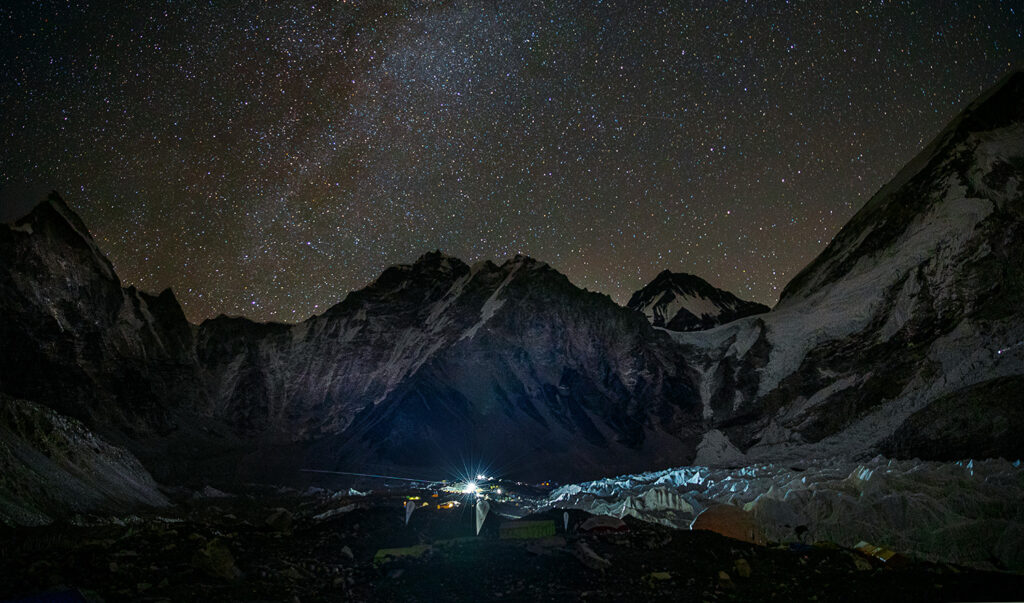
Meanwhile there is no hot water. A good hot shower now and then would have helped a lot, but there is no chance of that. In fact, we weren’t able to shower at all for 9 days. We only had hot water in Namche Bazaar, and even that was unreliable since it relied on solar heat. But suffice it to say that when we got back to Namche, those were the best showers we have ever taken.
That’s not to say we were miserable. We weren’t. But that’s just the part of the trek that we were the most surprised by. I don’t want it to be a surprise for you.
Another thing that surprises many people is how hard it is to see Mt. Everest – even from up close. Everest Base Camp is not on Mt. Everest. The climbers have to go through the Khumbu icefall and climb on the shoulders of neighboring mountains before reaching Everest. In fact, you cannot even see Mt. Everest from Base Camp. Keep in mind that some of the tallest mountains in the world surround Mt. Everest, so they block the view from up close.
That’s not to say you won’t see Mt. Everest. You can see the top of it from just outside of Base Camp. In addition, most treks include a climb up a hill named Kala Pattar, near Gorek Shep, which gives you the best views you will get of Everest. We were also able to catch glimpses of Everest from as far away as the hill above Namche. You will see it, it just won’t be the sort of thing where you will be standing at the base of it looking up at the top. We knew about that, but that seems to be a surprise for many.
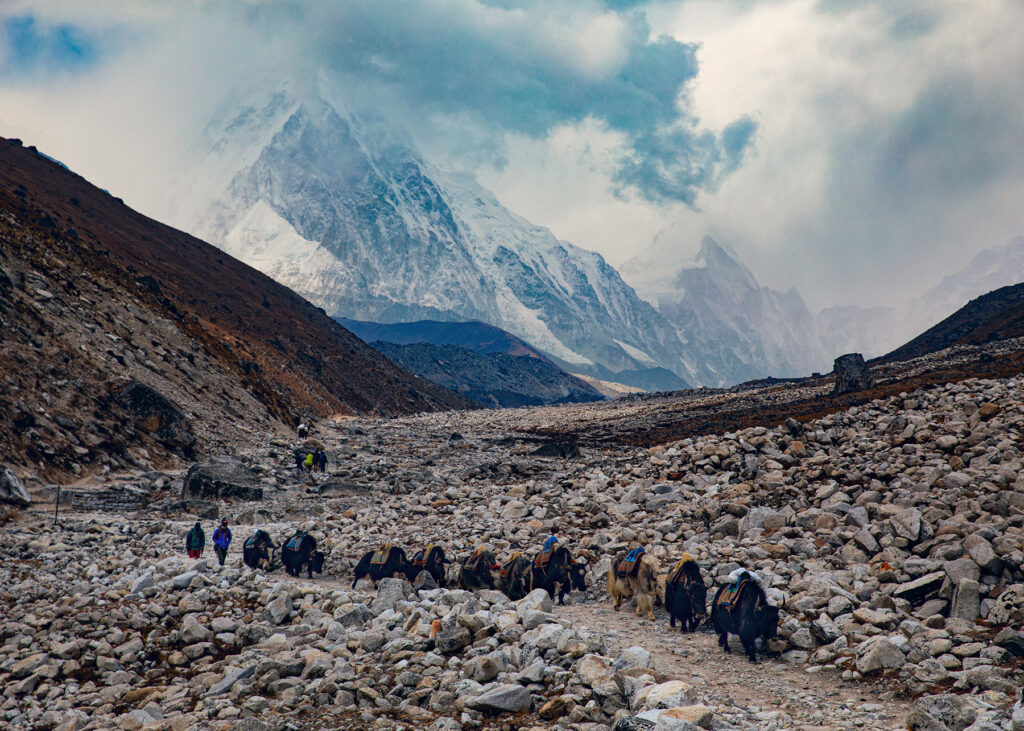
Photography on the Trek to EBC
Most people just take their phones with them on the trek, and that is perfectly adequate for them to take the sort of pictures they want to take. Obviously, that wouldn’t work for me or any other serious photographer, but the usual move of carrying a backpack full of photo gear is just out of the question. Hard choices had to be made. I went with my camera (Canon 5D mark iv) and one lens. I agonized over the lens, but ended up going with a 24-70 mm f/2.8 lens. This is a moderate to wide angle zoom lens that is very sharp and also very fast. I figured it was wide enough to take good landscapes with (and if I needed wider I could take multiple pictures and combine them later, which I often do anyway) and had a nice wide aperture for the shots of people along the way (the wide aperture blurs the background).
Did I wish I had more lenses on the trek? Yes. Often. But, for me, it was just out of the question. I needed to keep the weight down.
The big question was how to carry this rig. I wanted quick access to the camera but I didn’t want it in the way. I actually came up with my own solution where I wore it on the right side of my chest.. I bought one of those holster contraptions that you wear around your waist and then you clip the camera in around your hip. Of course, I didn’t want it bouncing along my hip all day, so I removed the clip from it and attached it to the front strap of my backpack. The camera sat on my chest, off to the side a little bit, so it was out of the way. But I still had extremely fast access to it. It worked great and I would recommend it for any hiker. It did everything I wanted: allowed quick access, added no weight, and made it easy to carry.
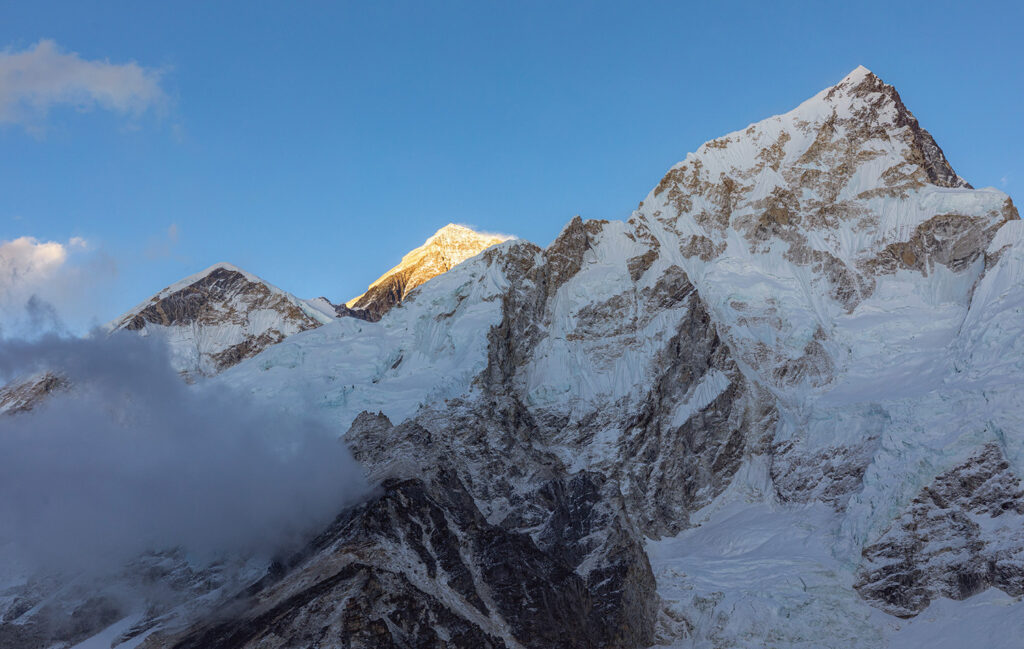
Would You Do It Again?
That leads to the question of “would you do it again?”
If, by that, do you mean, am I glad I did it? The answer to that is “hell yes.” It was eye-opening on many levels. The culture was unlike anything I’ve ever seen. The scenery was awesome. The mountains dwarf anything I’ve ever seen, and I had previously been in the Rockies, the Alps, and the Andes. And the trip also gives you a sense of accomplishment.
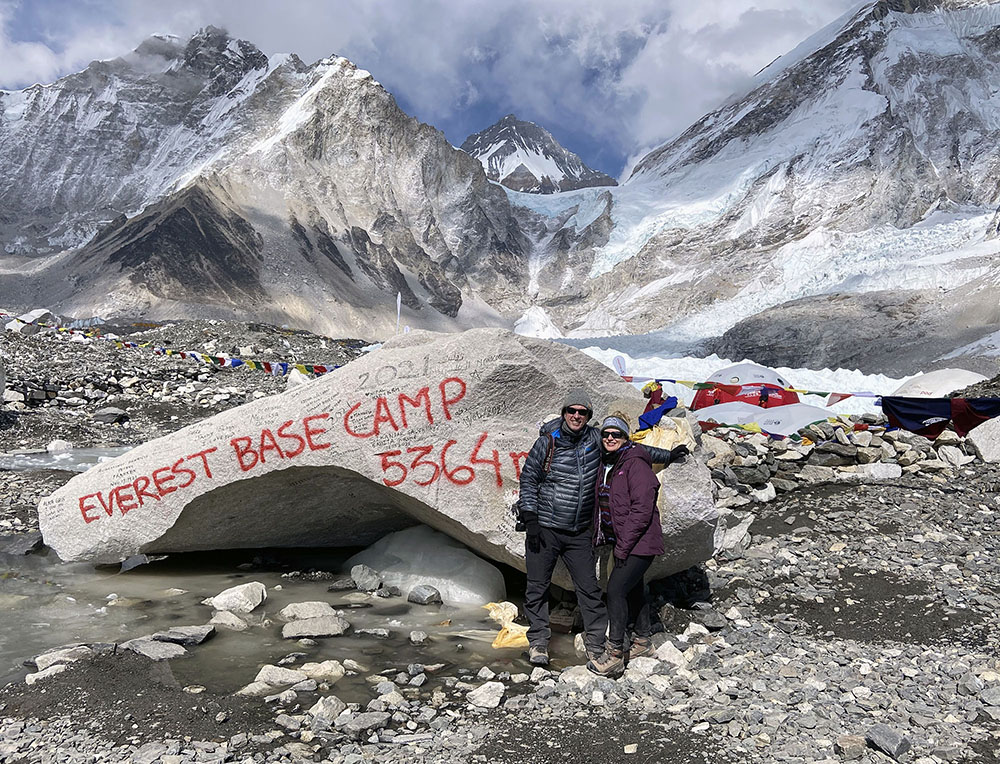
But if you mean do I have a burning desire to go back, no I don’t. I’ve done it. I photographed it. That’s what I wanted to do. On to the next thing.
That said, our trekking days are just beginning. This has inspired Susan and I to do others as well. We are already signed up to climb Kilimanjaro with Ian Taylor in 2023 and we are looking forward to that.
